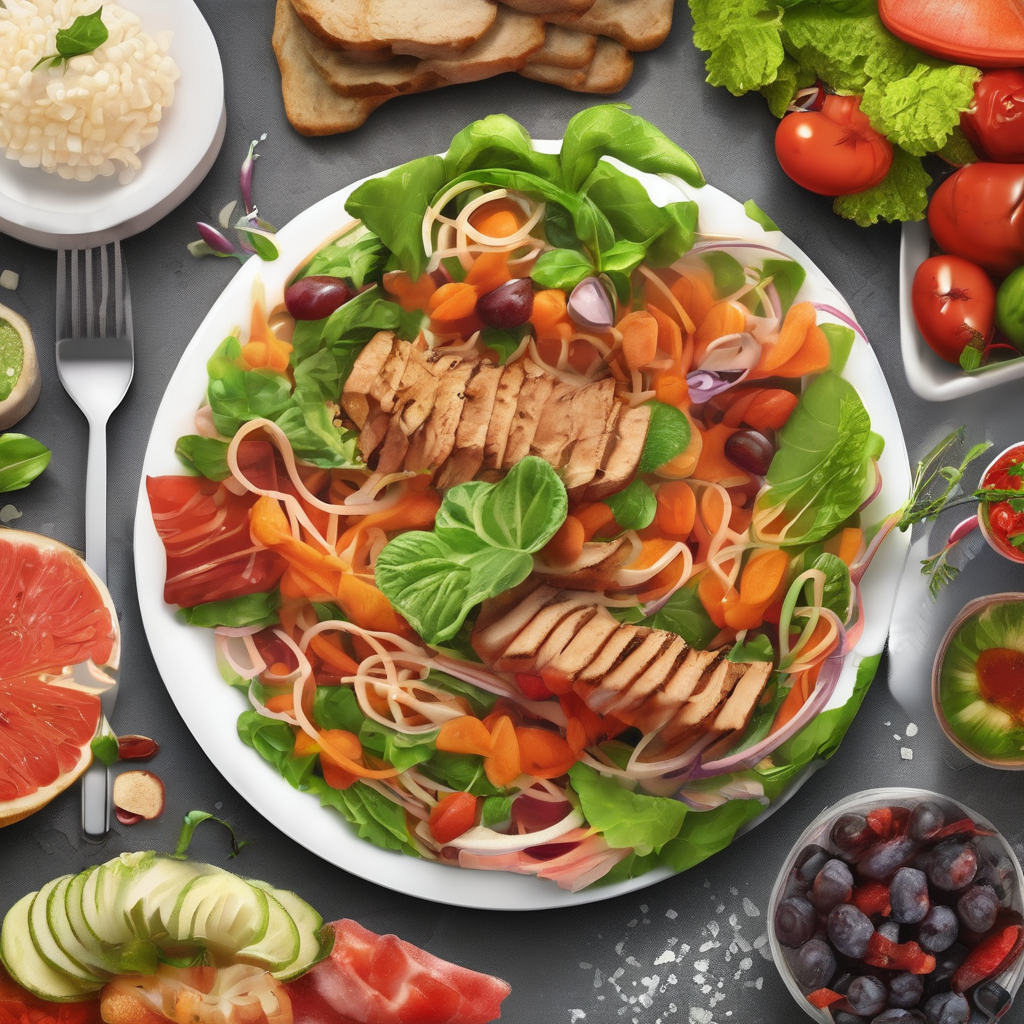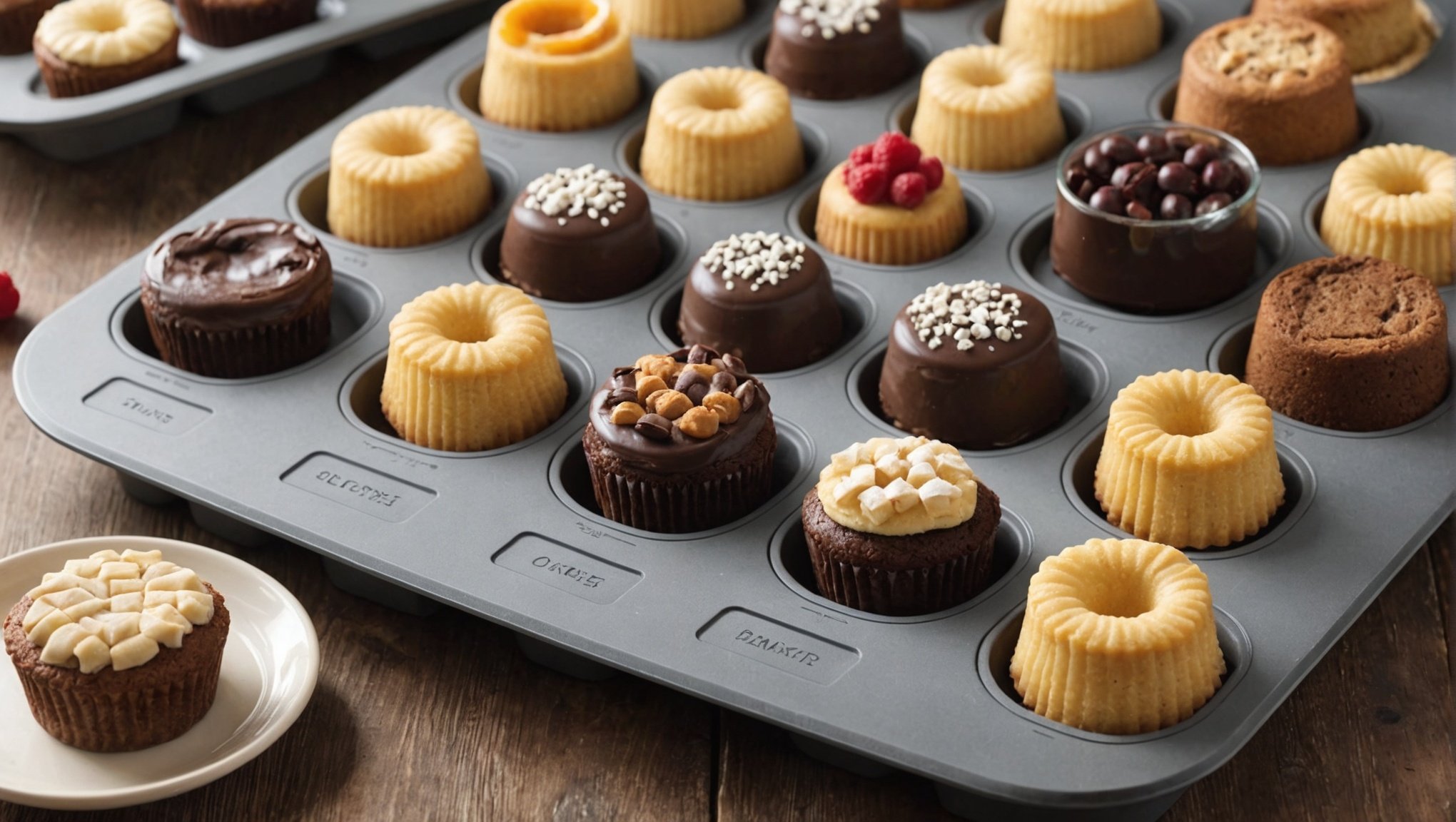Silicone bakeware is transforming the way we bake, especially for high-sugar recipes. Its flexibility and non-stick properties ensure easy release and minimal mess, allowing even the most delicate treats to shine. Unlike traditional metal pans, silicone distributes heat evenly, preventing burning or sticking, which is vital for sweet dishes. Explore how this innovative material can elevate your baking experience, making every treat a success. The secret to hassle-free desserts may lie in your choice of bakeware.
Advantages of Silicone Bakeware
Silicone bakeware offers numerous benefits that make it a popular choice for both amateur and professional bakers. One of the primary benefits is its non-stick properties, which allow for the easy release of baked goods. This feature reduces the need for additional greasing or flouring, making cleanup a breeze and maintaining the integrity of your baked creations.
Topic to read : Transform Your Diet: The Role of Refrigerator Organization in Weight Management and Healthy Eating
Another significant benefit is the flexibility and lightweight design of silicone bakeware. This allows bakers to easily handle and store their equipment without the risk of injury or excessive effort. The flexibility also aids in the removal of baked goods, as the bakeware can be gently bent to release the contents without damage.
Additionally, silicone bakeware is known for its durability and resistance to cracking or breaking. Unlike traditional glass or metal bakeware, silicone can withstand temperature fluctuations without compromising its structural integrity. This makes it an excellent long-term investment for your kitchen.
This might interest you : Transform Your Diet: The Role of Refrigerator Organization in Weight Management and Healthy Eating
Overall, the benefits of silicone bakeware, including its non-stick properties, flexibility, and durability, make it a versatile and practical choice for all your baking needs.
Comparison with Traditional Bakeware
When comparing silicone vs. metal bakeware, one of the most notable differences is in heat distribution. Silicone bakeware tends to heat more evenly compared to metal, which can result in more consistent baking outcomes. Metal bakeware, on the other hand, may develop hot spots, leading to uneven cooking. This makes silicone an attractive option for those seeking uniform results in their baked goods.
In high-sugar recipes, the choice between silicone and metal can significantly impact the final product. Silicone’s non-stick properties ensure that sugary concoctions release effortlessly, maintaining their intended shape and texture. Metal bakeware, while sturdy, might cause caramelisation or sticking, potentially altering the dessert’s appearance and taste.
Regarding longevity and maintenance, silicone bakeware surpasses traditional materials in several ways. Its resistance to rust and corrosion means it remains in excellent condition over time, whereas metal bakeware is prone to these issues. Silicone is also easier to clean, requiring less effort to remove stubborn residues. Thus, for bakers prioritising durability and ease of maintenance, silicone bakeware is a wise investment.
Optimal Usage Tips for Silicone Bakeware
To make the most out of your silicone bakeware, understanding the best practices is crucial. Preheating is one such consideration. While silicone bakeware distributes heat evenly, it’s advisable to preheat your oven to the desired temperature before placing your bakeware inside. This ensures consistent results, particularly in recipes requiring precise temperature control.
When dealing with high-sugar recipes, silicone bakeware shines due to its non-stick properties. It helps prevent sugary mixtures from sticking, ensuring a smooth release and preserving the intended shape and texture of your baked goods. However, be cautious with oven temperatures, as excessive heat can lead to caramelisation.
After baking, proper cooling and handling are essential. Allow your baked goods to cool slightly in the bakeware before attempting to remove them. This helps maintain their structure and prevents breakage. The flexibility of silicone allows you to gently peel away the sides, making removal effortless.
Remember, silicone bakeware is generally safe for freezer use, adding to its versatility. By following these tips, you can optimise your baking experience and enjoy consistently impressive results with your silicone bakeware.
Cleaning and Maintenance of Silicone Bakeware
Proper caring for silicone bakeware ensures its longevity and performance. When it comes to cleaning, the choice between dishwasher vs. hand washing depends on personal preference and the level of residue. Silicone bakeware is generally dishwasher safe, making it a convenient option for busy individuals. However, hand washing with mild soap and warm water can be more effective in removing stubborn residues and preventing wear over time.
To prevent odours and stains, it is crucial to thoroughly clean your bakeware after each use. Baking soda can be an effective solution for odour removal. Simply sprinkle it on the bakeware, let it sit for a few minutes, and rinse it off. For stains, a gentle scrub with a non-abrasive sponge can help maintain the bakeware’s appearance.
Storing silicone bakeware efficiently is another aspect of proper care. Its flexibility allows it to be easily folded or stacked, saving space in your kitchen. Ensure it is completely dry before storage to prevent mould or mildew. By following these best practices, you can extend the life of your silicone bakeware and enjoy its benefits for years to come.
Best Practices for Baking Sweet Treats
When crafting sweet treats with silicone bakeware, a few baking tips can enhance your results significantly. Adjusting baking times and temperatures is crucial, as silicone’s even heat distribution might necessitate slight modifications. Monitor your baked goods closely to prevent over-baking, which can occur if you’re accustomed to metal bakeware’s heat retention.
Certain sweet treats particularly excel in silicone bakeware. Brownies and cheesecakes benefit from silicone’s non-stick properties, ensuring a smooth release and preserving their delicate textures. For high-sugar recipes, this feature is invaluable, preventing sticking and maintaining the intended shape of your desserts.
Ingredient considerations are also vital for optimal results. When baking high-sugar recipes, ensure your ingredients are at room temperature to promote even baking. Additionally, incorporating ingredients like sour cream or yogurt can add moisture, enhancing the texture of your sweet treats.
By following these baking tips, you can maximise the potential of your silicone bakeware and create delightful, perfectly baked sweet treats every time.
User Testimonials and Experiences
Silicone bakeware has garnered a variety of reviews from home bakers, with many sharing their success stories. These testimonials often highlight the ease of use and the enhanced baking experience that silicone bakeware provides. One common theme among these experiences is the non-stick properties of silicone, which significantly reduce the frustration of baked goods sticking to the pan.
However, some users have faced challenges, such as adjusting to silicone’s flexibility. Initially, bakers might find it tricky to handle the pliable material, especially when filled with batter. Over time, many have adapted by placing their silicone bakeware on a sturdy baking sheet for added support.
The impact of silicone bakeware on baking routines is notable. Users report a more efficient cleanup process, saving time and effort. Additionally, the durability of silicone bakeware ensures that it remains a staple in their kitchens for years. These testimonials underscore the practical benefits and transformative effects silicone bakeware can have on everyday baking activities.
Recipes for High-Sugar Treats Using Silicone
Silicone bakeware is perfect for high-sugar recipes, offering a seamless baking experience. Here are some signature recipes that highlight its effectiveness:
Brownies: Known for their rich, chocolatey flavour, brownies benefit from silicone’s non-stick properties. This ensures a smooth release, preserving the delightful gooey centre. Simply pour your favourite brownie batter into a silicone mould and bake as usual.
Caramel Tarts: These sweet treats can be tricky, but silicone makes it easier. The flexible nature of silicone allows you to pop out the delicate tarts without breaking the caramelised tops.
Customising Recipes: When using silicone, consider reducing baking times slightly. Silicone’s even heat distribution may require adjustments to avoid over-baking. Additionally, experiment with adding ingredients like sour cream or yoghurt for added moisture.
For special occasions, innovative treats like fruit jellies or mini cheesecakes can be crafted using silicone bakeware. These recipes leverage silicone’s versatility to create visually appealing and delicious desserts.
With these tips, you can explore a range of high-sugar recipes, ensuring each treat is perfectly baked and easily released from your silicone bakeware.
Eco-Friendly Aspects of Silicone Bakeware
Silicone bakeware is a standout among sustainable bakeware options. Its material sourcing contributes positively to its environmental impact. Unlike traditional bakeware, silicone is derived from silica, a natural resource found in sand, making it a more eco-friendly choice. This sourcing method reduces the reliance on non-renewable resources, aligning with eco-conscious baking practices.
One of the most significant benefits of silicone bakeware is its reusability, which plays a crucial role in reducing waste. Unlike single-use bakeware options, silicone can be used repeatedly without degrading in quality. This durability means fewer resources are consumed over time, and less waste is generated, making it a sustainable choice for eco-minded bakers.
In comparison to single-use bakeware, silicone stands out for its long lifespan and minimal environmental footprint. Single-use items contribute significantly to landfill waste, whereas silicone’s reusability helps mitigate this issue. By opting for silicone bakeware, bakers can actively participate in reducing their environmental impact, promoting a greener kitchen environment.
Overall, silicone bakeware’s sustainable attributes make it an excellent choice for those looking to bake with an eco-friendly mindset, offering both practical and environmental benefits.
Common Myths About Silicone Bakeware
Silicone bakeware often falls victim to various misconceptions that can deter potential users. A prevalent misconception is regarding its safety, with some questioning the safety of silicone materials. Silicone is made from silica, a natural element, and is generally considered safe for cooking and baking. It is non-toxic and does not leach harmful chemicals, making it a reliable choice for kitchen use.
Another misconception revolves around its baking performance. Some believe that silicone bakeware doesn’t heat evenly, leading to inconsistent baking results. However, silicone’s ability to distribute heat evenly ensures that baked goods cook uniformly, often surpassing traditional metal bakeware in performance. This characteristic makes it ideal for achieving consistent baking outcomes.
Durability is also a common myth associated with silicone bakeware. Many assume that its flexible nature equates to fragility. In reality, silicone is highly durable and resistant to cracking or breaking. It can withstand temperature fluctuations without losing its shape or effectiveness, debunking the myth of its lack of durability.
By addressing these misconceptions, bakers can make informed decisions and fully appreciate the advantages of silicone bakeware.
Future Trends in Bakeware
As the world of baking evolves, innovations in baking tools are reshaping kitchens globally. Emerging materials and technologies are at the forefront, promising to enhance both amateur and professional baking experiences. One of the most notable trends is the increasing use of silicone in professional baking. Its flexibility, durability, and non-stick properties make it a favourite among bakers seeking efficient and reliable tools.
Looking ahead, the future of kitchen tools in baking is set to embrace even more advanced materials. These innovations aim to improve heat distribution, reduce energy consumption, and enhance user convenience. With the growing emphasis on sustainability, materials that are eco-friendly and long-lasting will likely dominate the market.
Predictions for the future also include the integration of smart technology into bakeware. Imagine bakeware that can monitor baking progress and adjust temperatures for optimal results. As these trends continue to develop, bakers can expect a seamless blend of tradition and technology, offering unprecedented control and precision in their culinary creations. The rise of such innovations in baking tools is set to transform how we approach baking, making it more accessible and enjoyable for everyone.







No responses yet